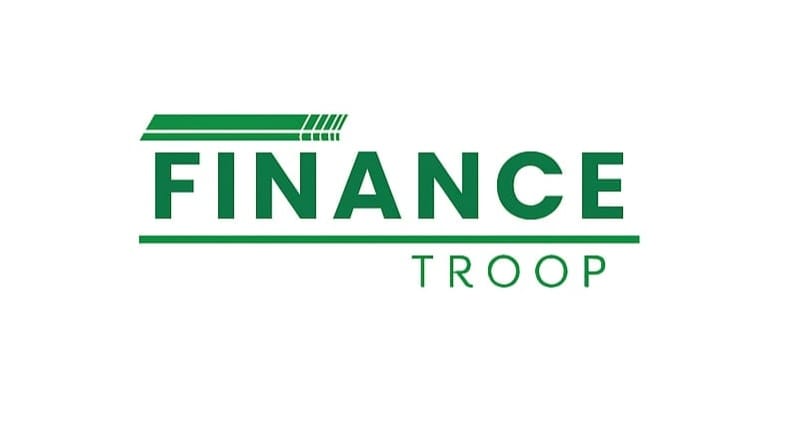The freelancer boom in India has opened up new ways to earn — from content writing, graphic design, consulting, tutoring, video editing, and even Instagram marketing. But with that freedom comes confusion about a boring but essential topic:
Income tax filing!
If you’re a freelancer or self-employed individual, you’re considered a “professional” or “business” taxpayer — and your tax filing process is slightly different from salaried employees.
But don’t worry — in this complete guide, we’ll explain:
- How freelancers are taxed in India
- What deductions you can claim
- How to file your return in 2025
- Pro tips to save money and avoid penalties
Let’s make taxes easy — and actually work for you.
Who Is Considered a Freelancer for Income Tax?
If you earn money by offering services directly to clients — without being on a salary — you’re classified under “Professionals” (Section 44ADA) or “Businesses” (Section 44AB/44AD) in India.
This includes:
- Writers, designers, developers
- Content creators, influencers
- Tutors, consultants, coaches
- Freelance marketers, SEO experts
- YouTubers, voiceover artists, etc.
Important: If you get paid without TDS deduction or get income in your personal account, it’s counted as freelancing income, not salary income.
How Is Freelancer Income Taxed?
Freelancers pay income tax based on their total annual income after allowed deductions.
You can choose between two taxation options:
1. Presumptive Taxation (Section 44ADA)
Best for incomes under ₹50 lakhs/year
- No need to maintain detailed books of accounts
- Government assumes 50% of your income is profit, and taxes only that
- Tax is calculated on 50% profit, under applicable slab
Example:
You earn ₹12,00,000 this year → 50% = ₹6,00,000 profit
→ You pay tax on ₹6,00,000 using the old tax slab
⇒ Must pay Advance Tax quarterly
⇒ File using ITR-4 form
2. Normal Taxation
Use this if:
- You earn above ₹50 lakh/year
- You want to claim real expenses (software, internet, laptop depreciation)
Here, you maintain bookkeeping and reduce your business expenses from total income. What’s left is taxable.
⇒ Advanced but flexible — use ITR-3 form
Documents Needed for Freelancer Tax Filing
To file as a freelancer in India, you’ll need:
Document | Purpose |
PAN Card | Income tax link |
Aadhaar Card | e-verification purposes |
Bank statements (all accounts) | Proof of income |
Record of client payments | Invoices, UPI/SMS/email screening |
Expense receipts | To claim under deductions |
Form 26AS | Shows TDS deducted, if any |
It’s best to maintain a digital Excel record of invoices + expenses monthly.
Expenses You Can Claim as Deductions
Freelancers can subtract business expenses from total income to lower tax.
Common Allowable Expenses:
- Software tools (Canva, Adobe, Zoho)
- Laptop, router, mobile (depreciation allowed)
- Wi-Fi & electricity charges
- Rent of co-working space
- Domain name, hosting, website fees
- Travel for client meetings
- Professional subscriptions/memberships
🛑 Must maintain receipts or bills for each of these.
When & How to File Freelancer ITR (2025 Timeline)
Due Date for Filing:
31st July 2025 – If books not audited
31st October 2025 – If books need audit
How to File:
- Visit https://incometax.gov.in
- Register or log in
- Choose ‘File Income Tax Return’
- Use ITR-4 (presumptive) or ITR-3 (normal)
- Upload your income details
- Claim deductions (if applicable)
- Pay balance tax (if any) and submit
- E-verify within 30 days
Pro Tax-Saving Tips for Freelancers
- Use an accounting app (Vyapar, Zoho Books, QuickBooks)
- File GST if turnover exceeds ₹20 lakh (service sector)
- Use Section 80C to save tax: Invest in ELSS, PPF, LIC
- Open a separate bank account for freelance income
- Pay advance tax every quarter if income > ₹10,000/year
Penalties to Avoid
Mistake | Penalty |
Not filing return on time | ₹1,000–₹5,000 late fee (under Section 234F) |
Not paying advance tax | Interest under Section 234B/234C |
Hiding foreign payments | Hefty fines under FEMA and Income Tax Act |
Always declare even PayPal/U.S. dollar payments. The Income Tax Department tracks everything.
Summary: Step-by-Step Freelancer Tax Checklist
- Track all freelance income monthly
- Separate business vs personal expenses
- Choose between Presumptive (ITR-4) or Normal (ITR-3) model
- File return before 31st July 2025
- E-verify & keep acknowledgment safe
- Consult a CA if you earn ₹10L+ yearly
Conclusion
Freelancing in India is liberating — but don’t ignore the tax side of your journey.
Good bookkeeping + basic knowledge = you save more + avoid future trouble.
So take control now and file like a pro
Your freelance business is a business — treat it smartly.
Frequently Asked Questions (FAQ)
1. Is mental health covered under health insurance in India in 2025?
Yes. As per the Mental Healthcare Act, 2017 and IRDAI directive (effective from October 2020), all health insurers in India are required to cover mental illnesses at par with physical illnesses. In 2025, this includes hospitalisation due to psychiatric disorders, counselling, psychotropic medications, and sometimes OPD treatment. Most comprehensive health plans now include mental health as a standard or add-on feature.
2. Which health insurance is best for mental health treatment in 2025?
In 2025, top insurers for mental health coverage include:
HDFC ERGO my:health Suraksha – Covers psychiatric hospitalisation and OPD
Niva Bupa ReAssure 2.0 – Extended coverage with therapy benefits
Star Health Comprehensive Plan – Mental health cover for a wide range of conditions
Aditya Birla Activ Platinum – Optional rider for counselling and teleconsults
Coverage varies, so always check for sub-limits, exclusions, and network hospital support.
4. Does Indian health insurance cover therapy or counselling sessions?
Yes, but with limitations. Some policies in 2025 cover a fixed number of OPD sessions or therapy consultations per year. For instance:
HDFC: Up to ₹50,000 per year for OPD + counselling
Niva Bupa: 8 sessions/year under ReAssure Top-Up
Aditya Birla: Tele-counselling included in rider
OPD claims usually need reimbursement, not cashless presentation.
5. Is hospitalisation for mental illness covered under insurance in India?
Yes. IRDAI mandates full coverage for in-patient psychiatric hospitalisation. That means:
Room rent, doctor’s fee, nursing
Diagnostics, medication, and therapy during hospitalisation
Rehab & recovery for conditions like schizophrenia or suicidal tendencies
Ensure that the hospital is on the insurer’s cashless network and offers approved psychiatric facilities.
6. How to file a claim for mental health treatment under insurance in 2025?
You can file claims in two ways:
♦ For Cashless Claims:
Get admitted to a network hospital
Submit psychiatric diagnosis + referral
Hospital gets pre-approval from insurer
Bills are settled directly by insurer (excluding non-covered items)
♦ For Reimbursement Claims:
Submit medical bills, consultation reports, and prescriptions
Upload documents on insurer’s portal
Reimbursement typically processed within 10–21 days
Always save digital and hardcopy records for compliance.
7. Do all Indian insurers follow IRDAI mental health coverage rules?
Yes. As mandated in the IRDAI circular dated June 2, 2020, and reaffirmed in 2023, every health insurer registered in India must include mental illness coverage. By FY 2024–25, 91% of health insurance plans include mental health care either in their base plan or as an add-on.
Failure to comply can result in penalties under Section 14 of the Insurance Ombudsman rules.
8. Is psychiatric treatment covered under Ayushman Bharat or CGHS?
Yes. Under Ayushman Bharat PM-JAY, mental healthcare is included, especially for eligible rural families and low-income groups. CGHS and ESI also cover psychiatry consultations and hospitalisation for government employees and workers respectively.
These schemes promote mental wellness as part of universal health coverage, and coverage is based on treatment guidelines by the National Health Authority (NHA)
Click here to more information: Best Personal Loan for ₹1 Lakh in India (2025) – Instant Approval, Low Interest Rates




